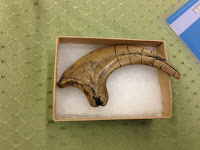The library had an extremely popular weekly LEGO Club for kids 5 to 12 (we have extra large building bricks in the children's room out all the time for younger kids). There was a large assortment of regular pieces, boards, minifigures, and a ton of random little accessories. People might tell you that you should steer away from sets and kits and stick to the plain pieces, but it's not true. The kids love the little flames, swords, flowers, and all kinds of bits that they use to create mini kingdoms and scenes. My supervisor use to go to a LEGO store that had a fill-a-bag section and would just add all kinds of things. As our minifigures walked out over the course of the years I was there (especially the female minifigures), I budgeted in two sets from LEGO Education- this community set and a fantasy one. I found these sets to be the best price for the largest number of figures. I also added a bunch of 10X10 plates, the kids liked to add them together to expand and we had a limited number, these I just got from Amazon. When the kids came in they'd choose their plates and minifigures, which were carefully rationed before we got the new sets. Then they'd find a spot around a table set with gladware bowls full of regular pieces and large plates heaped with accessories, for easier digging. Anything in a bowl or plate is fair game, if it's on the table in front of someone it's been spoken for and you have to ask if they will trade. At the end we put each child's creation in our lighted display case for the week with a post-it or card with their name on it. They love showing their parents and friends throughout the week.
With very few exceptions, I didn't set themes or parameters for the kids, they all had different interests and things they wanted to build and I felt it was important for them to have some unrestrained creative time. This social media ad shows a couple incredible dynamic scenes the kids came up with one week:
I sometimes had teen volunteers help me with LEGO club and while it was under my main umbrella focus, part time employees tended to run it most of the time after I'd been there a few months. A few hours before the program time I'd take the creations out of the display and take them apart, separating out the regular pieces from the accessories and the minifigures. I once took apart a small constructed box in a scene, when I opened it there was a disembodied minifigure head with a small red single cap piece on the neck, I have no idea which kid made it, but it's one of my top ten LEGO club memories.
Extended Version
When LEGO club falls during a school vacation or an early dismissal we would extend it to two hours and add some maker activities. LEGOs were still the most popular by far but we managed to get some to expand. Here are some of the other stations:
LEGO Catapults-
These were my first addition. I will admit I held the minifigures hostage to encourage the kids to try something new, if you wanted a guy you had to at least try to make it fly. There were to approaches to making them, one was a simple lever on an wheely base, and the other involved small rubber bands and was a bit harder to make work. I covered a table in paper to let us track and measure their efforts.
Geodesic Building
This one became extremely popular and a regular fixture of Extended LEGO club. I added it because kids + snacks is a no-brainer. It's pretty simple: edible joints connect toothpicks to make pyramids, towers, and domes. The first time I used hard gummy pumpkins, because it was Thanksgiving. These worked well but were heavy and not very tasty. We also used grapes, which worked the best and healthy, but were expensive. We tried cheese sticks broken up into cubes, they didn't work at all, they got too soft too quickly. In the end, our tried and true choice was mini marshmallows. They're very cheap and work perfectly. Each child gets a plate, a pile of toothpicks (around 25), and about a 1/3 cup of marshmallows. They're welcome to eat their building materials, but they have to build at least one thing first.
k'nex
Someone donated a huge box of these next-level building toys to the library. We set them out and just let the kids do whatever they want. They're a bit harder to put together than LEGOs and take some more patience. They like that they can make creations that move and we also have two motors that take a lot of trial-and-error to make work but are popular too.






























